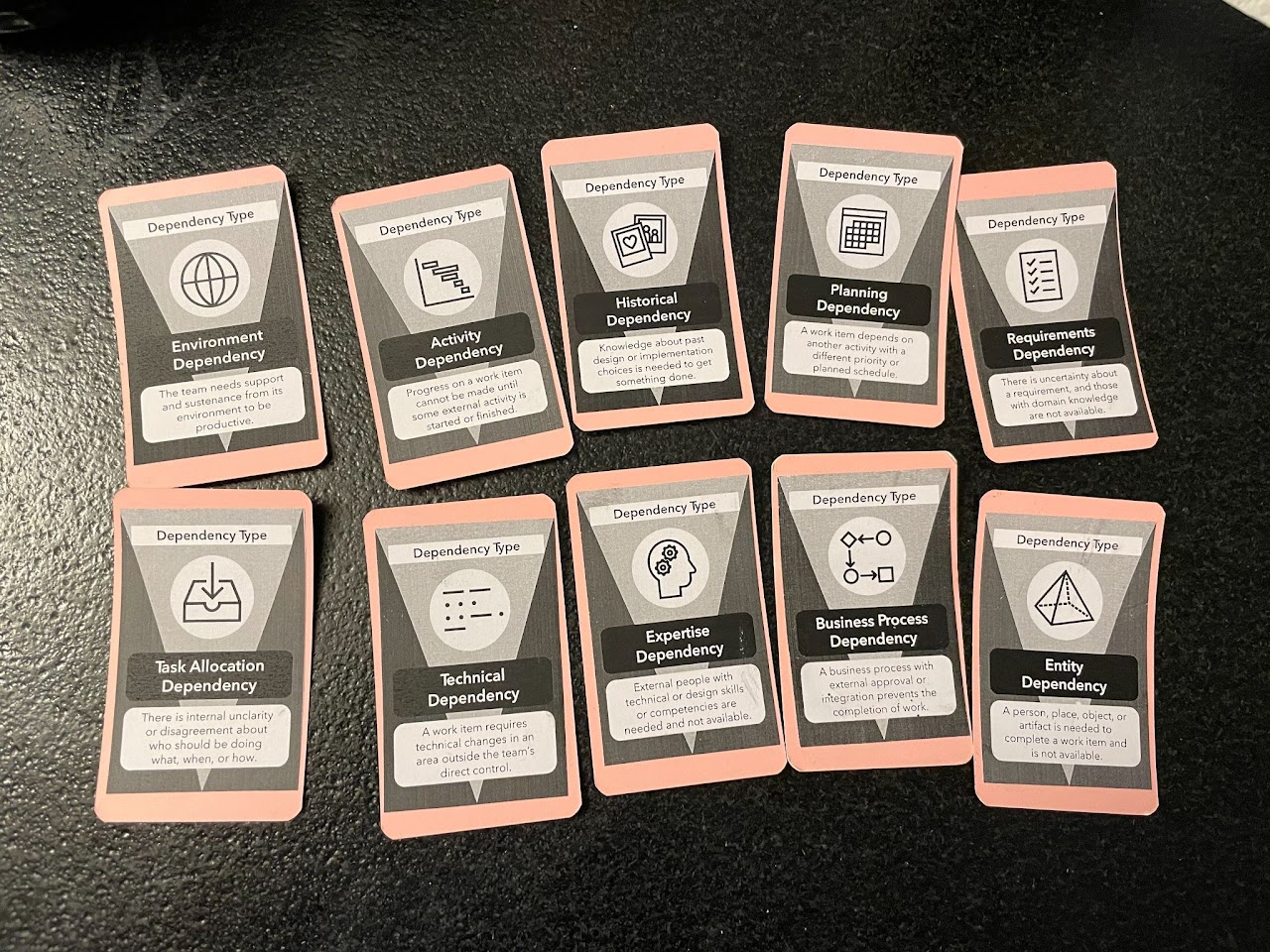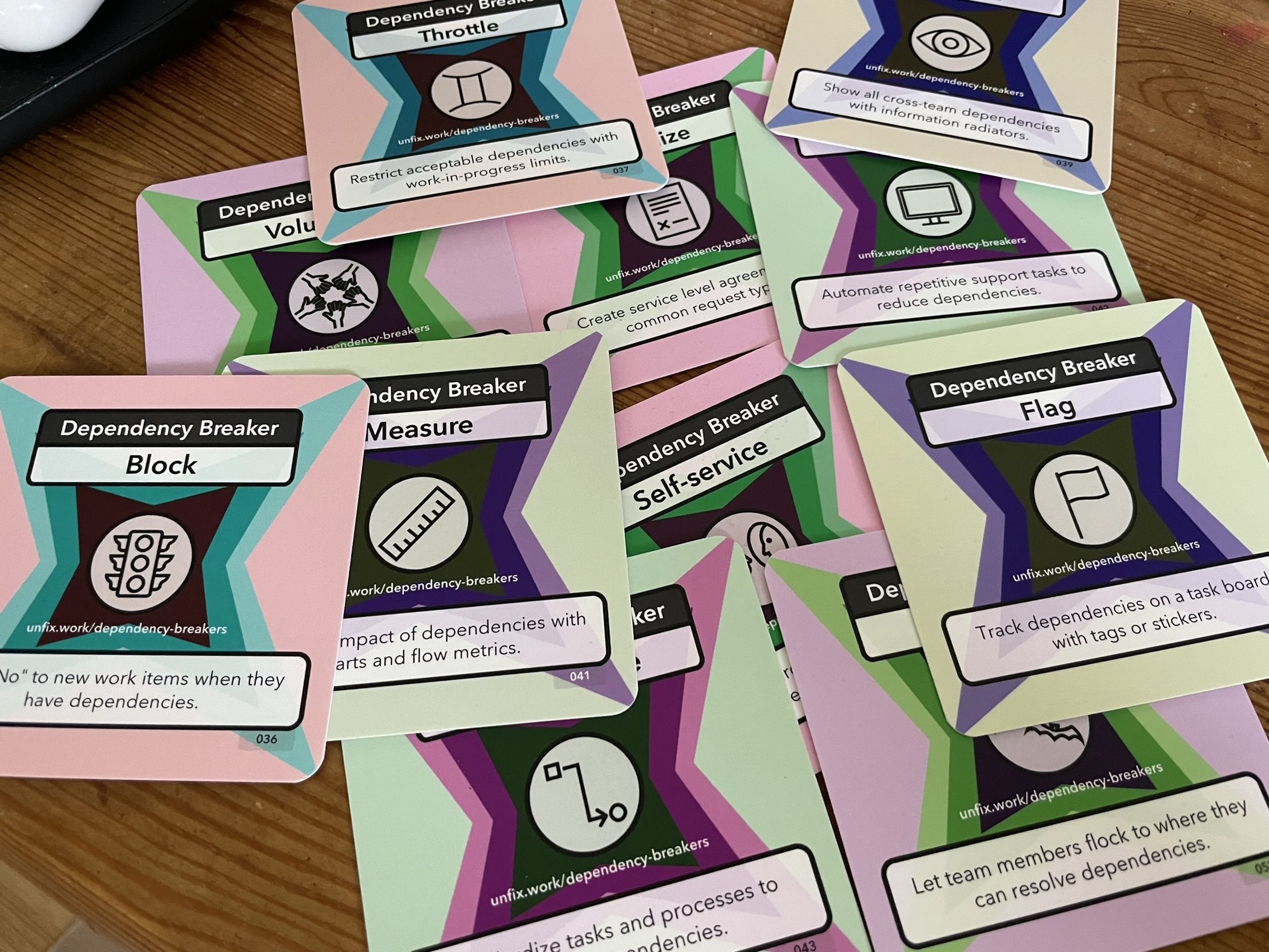Dependency Poker for Scrum Teams
Dependency Poker is an Agile game — similar to planning poker — that enables teams to identify and manage dependencies in the development process.
Join the DZone community and get the full member experience.
Join For FreeDependency Poker is an Agile game — similar to planning poker — that enables teams to identify and manage dependencies in the development process. It can be utilized in Backlog Refinement or SAFe's PI Planning to enhance collaboration and reduce project risks.
The Cards
To play Dependency Poker, your team must create or obtain cards representing different types of dependencies. These are used in the first step to identify dependencies between software components or features. The second set of cards, strategy cards, are used to find effective solutions for managing dependencies and mitigating risks.
1. Dependency Cards
In the paper "A Taxonomy of Dependencies in Agile Software Development," dependency categories were identified. The list describes different types of dependencies that can affect the completion of work in a software development project. These include Requirements, Expertise, Task Allocation, Historical, Activity, Business Process, Entity, and Technical Dependencies.
In unFix, Planning and Environment dependencies are added.

Self-printed Cards from unFix
2. Dependency Breaker
unFix provides a list with 20 Dependency Breaker: Block, Throttle, Prioritize, Visualize, Flag, Measure, Automate, Standardize, Redesign, Decouple, Toggle, Contain, Coordinate, Attend, Reteam, Rotate, Swarm, Volunteer, Formalize, and Self-Service.

Dependency Basher Cards
3. Best Practice Card Sets
The Dependency Breaker cards from Unfix are a popular and widely used set of dependency cards that represent the different types of dependencies that can exist between software components or features.
The Game
To start the game, the team needs to understand the different types of dependencies by explaining Dependency Poker dependency type cards to each other. The perfect time to perform Dependency Poker is during SAFe's PI Planning, Scrums Backlog Refinement, or during Workshops.
- Placing all Cards on a to-be-Refined Backlog Item
The team then places all(!) of the Dependency Cards on the next backlog item with the highest order. The team can then work together to remove the cards that are not relevant or that have been resolved already by using consensus-based decision-making to ensure that all team members have a shared understanding of the dependencies involved in the development of the backlog item. - Clustering the Dependencies
In the second step of Dependency Poker, the team clusters dependencies together to understand their interconnections and develop strategies to manage them more effectively. Different team members may have different views on dependencies, and identifying clusters helps identify potential risks and dependencies that may have been overlooked. - Finding a Solution
After clustering dependencies in Dependency Poker, the team finds and commits to strategies to handle them. Each participant uses his/her set of strategy cards and throws them on the cluster of dependencies to discuss which strategies are most effective. The goal is to agree on a shared strategy and commit to implementing it. Dot voting can be used to identify the best options, and the team should document these for further analysis. This step ensures that the team has a shared understanding of dependencies and a plan to address them, improving collaboration and reducing project risks.
Analyzing the identified dependencies and strategies can provide valuable insights into how to optimize your business agility. By reviewing the strategies that the team has committed to, you can determine if they are effective and if there are any additional steps that could be taken to improve the management of dependencies.
The growing Dependency Poker website provides a wealth of resources, including experience reports and artifacts, to help teams improve their dependency management process. By utilizing these resources and continuously evaluating and improving their approach to handling dependencies, teams can increase their agility, reduce project risks, and deliver successful outcomes.
Opinions expressed by DZone contributors are their own.

Comments